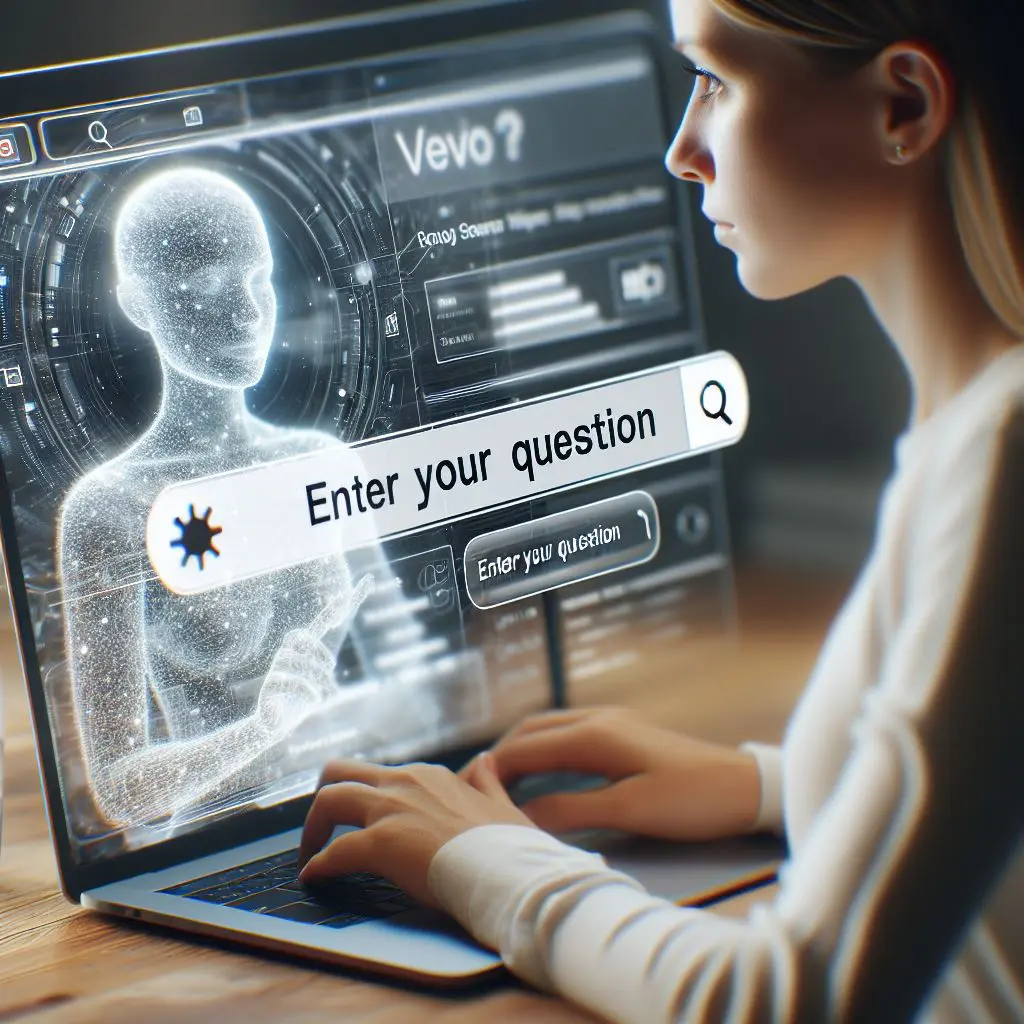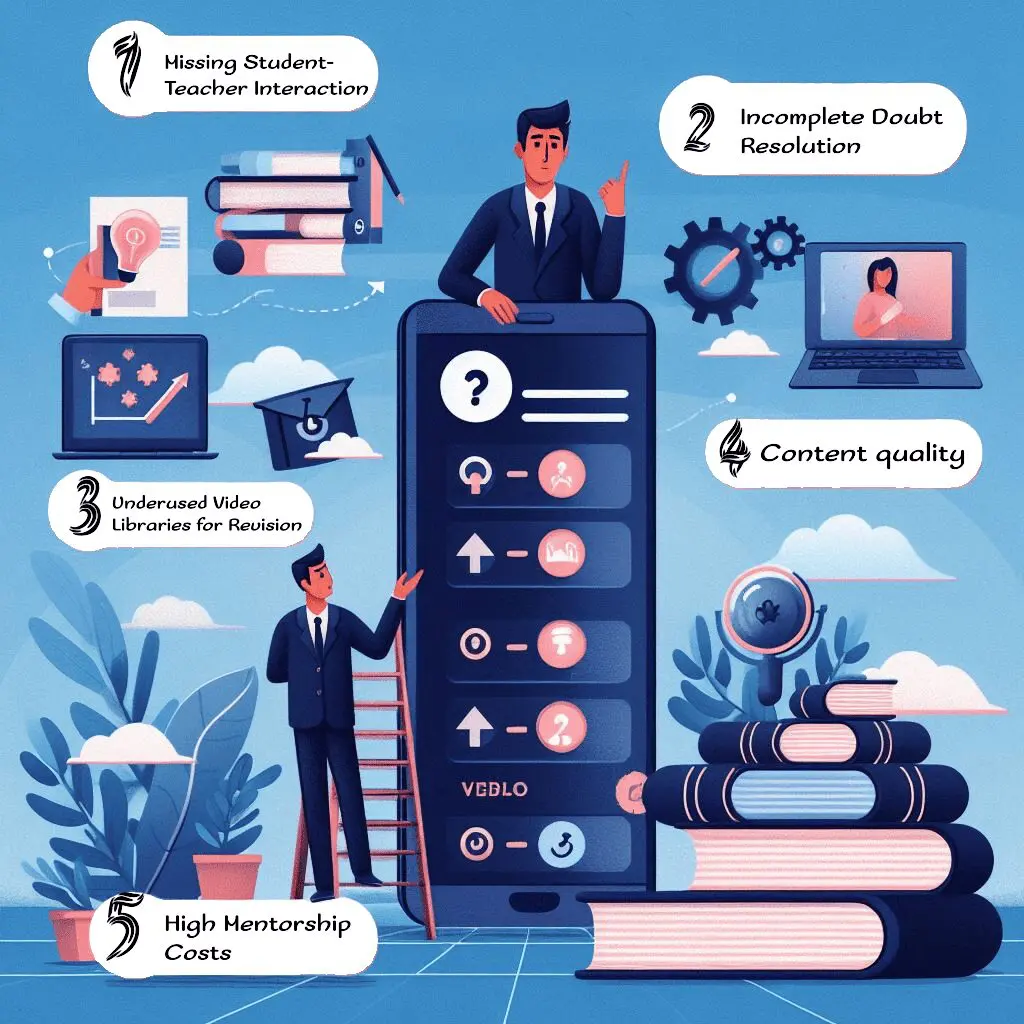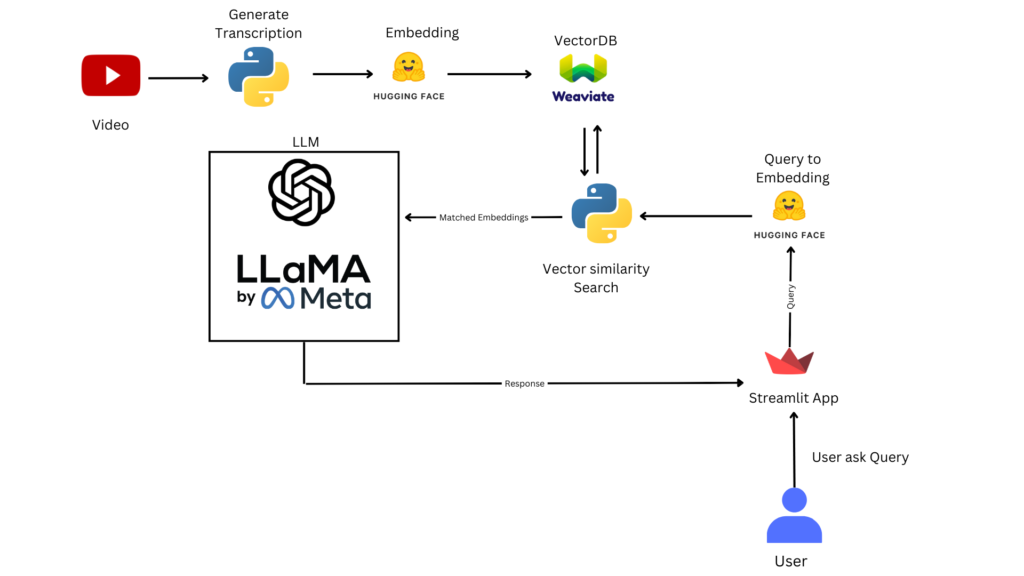How GenAI Video Search Drives Ed Tech & Transforms Education

In today’s digital age, the vast ocean of online video content can be a treasure trove of information. However, extracting valuable insights from lengthy videos can be a daunting task. One of our valued clients, an EdTech company with over 1 million users and a stellar 4.7 rating, experienced productivity challenges for both teachers and students. The majority of the time was spent resolving doubts, and even then, some questions remained unanswered due to the limitations of traditional teaching methods.
We devised a plan to use cutting-edge technology to transform education in response to this challenge. In addition to resolving the EdTech company’s concerns, our GenAI powered solution creates new opportunities for anyone looking for an engaging and more effective way to learn from online videos. This article explores the difficulties encountered, creative solutions used, and outstanding results attained. The best part? Our solution is accessible to all! Feel free to explore it by clicking here and if you’re interested in enhancing your company’s capabilities with our technology, don’t hesitate to contact us.
Top 5 challenges we faced for the EdTech company
Here are the top 5 challenges our EdTech company faces in today’s digital landscape:

- Missing Student-Teacher Interaction with Video Learning: One big challenge for EdTech is that when students use on on-demand videos and Live streams to learn, they don’t get to interact with teachers due to a lot of factors such as hesitation, too many students, etc. Without the personal touch of being in a class together, students might find it hard to fully engage with the lessons.
- Inefficient one-on-one personal coaching and doubt clearing: Another problem is getting personal help and clearing doubts one-on-one in online classes. This is not possible due to the large number of students, and a teacher won’t be able to provide one-on-one coaching due to time availability.
- Poor Utilization of Video Libraries for Recall and Revision: EdTech companies often see students not using video libraries well for remembering and reviewing lessons. There’s so much content available that it can feel overwhelming, and students might not use these resources enough to reinforce their learning.
- Less robust monitoring of engagement and content quality: Keeping an eye on how much students are engaged and making sure the educational content is of good quality can be hard for EdTech. Without the right tools and plans, it’s tricky to know if students are using the material well and if the content meets educational standards.
- High Cost of Mentorship: Lastly, mentorship programs can be expensive, which is a challenge for both EdTech and students. It’s important for mentorship to be affordable so that all students, no matter their financial situation, can get quality support.
Our Solution using GenAI
In order to overcome the challenges mentioned in the previous section, we’ve utilized GenAI technology to make video learning more interactive and engaging. We’ve adopted the following strategies:

- Generated the subtitles using the transcription service.
- Vectorization of transcriptions, books, and topics using LLM models.
- Indexing and storing the vector data in a vector database.
- RAG implementation for query processing, context retrieval, and answer generation.
- Introducing a Chat Interface powered by GenAI: With each video lecture, we’ve provided a chat interface where users can ask doubts in natural language, and the bot will provide precise answers along with relevant videos with timestamps.
Benefits and Applications
1. Efficient Knowledge Retrieval: The ability to change long videos into short summaries helps users quickly get the information they need. Whether you’re a student trying to understand school stuff or a professional looking into different topics, being able to do this efficiently is valuable. This benefit translates to a 20–25% increase in efficient knowledge retrieval, making learning and research more effective.
2. Time Savings: Making summaries of videos makes it easier to get the main information and also helps students learn and makes difficult subjects easier to understand. People don’t have to spend a lot of time watching the whole video; instead, they can quickly get the most important details. This results in a time savings of at least 20%, allowing users to focus on other tasks or consume more content in less time.
3. Enhanced Accessibility: Summaries make it easier for people who learn in different ways. Whether you prefer seeing, hearing, or doing things, a good video summary can help you understand better. This leads to a 10-15% improvement in accessibility, accommodating diverse learning preferences, and enhancing overall comprehension.
4. Research and Analysis: People who are experts or researchers can use video summaries to study trends, get valuable information, and stay informed in their areas of interest. This contributes to a 10-15% increase in providing valuable insights and knowledge.
5. Addressing User Doubts: Having a system in place to address user doubts effectively is crucial for a successful learning platform. With many doubts arising, especially after watching videos or attending lectures, users benefit from at least a 15% increase in confidence and clarity when their questions are promptly answered.
Conclusion
Our demo showcases a user-friendly interface, empowering users to effortlessly select a video of their choice. With a prompt for specific questions, our application ensures a tailored learning experience, guiding users to pinpoint the information they seek. Once the user submits their queries, the application works its magic using GenAI to summarize the answers concisely. But that’s not all—our application provides a convenient link, directing users to the precise moments in the video where their questions are addressed. It’s a sophisticated yet user-centric solution, simplifying the learning process and putting valuable information at your fingertips.

We start by converting videos into text chunks, accompanied by metadata. These entries are then neatly organized and stored in Weaviate for accessibility and efficient searches.
Then, we explore vectorization using Hugging Face models, uncover the power of near-vector search, and demonstrate summarization with GenAI. The benefits are substantial, from efficient knowledge retrieval and time savings to enhanced accessibility and clearing up any questions users might have.
This blog shows how we helped EdTech increase its user base and retain its existing students by changing long videos into helpful summaries. It’s a new way of learning in the digital world. Come with us on this journey of change!
Reference
- For more details, you can refer to our company’s GitHub repository
- Create First Blog Using AI
- 30% Time Savings in AI Development: The EKS CI/CD Solution
- How to Achieve 60% AWS Cost Optimization with Functions and Tags
- How to Optimize QA Automation for 30% Quicker Releases
- Why You Can’t Focus 100% of the Time